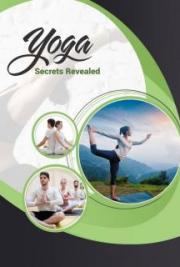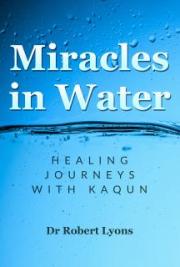Table of Contents
Introduction ............................................... 5
What is Yoga?........................................... 10
What Yoga Isn’t......................................................................................... 12
The Essence of Yoga............................................................................ 13
Yoga and Physical Health............................................................... 14
Why is Yoga Beneficial?............................ 18
The Mind-Body Connection.......................................................... 20
Physical Benefits....................................................................................... 21
Psychological Benefits........................................................................ 23
Supporting a Healthy Lifestyle................................................. 23
Emotional Benefits................................................................................. 27
Pain Management Benefits........................................................... 27
Real People, Real Benefits ............................................................ 29
Different Kinds of Yoga............................. 30
Six Major Types......................................................................................... 32
Hatha Yoga...................................................................................................... 33
Raja Yoga........................................................................................................ 334
Karma Yoga.................................................................................................... 35
Bhakti Yoga..................................................................................................... 35
Jnana Yoga...................................................................................................... 37
Tantra Yoga.................................................................................................... 38
Advice for Beginners............................................................................ 39
Final Note on Consistency............................................................. 42
Yoga Equipment & Accessories ................. 43
Yoga Mats ......................................................................................................... 45
Yoga Towel...................................................................................................... 46
Yoga Bags......................................................................................................... 46
Yoga Straps.................................................................................................... 47
Yoga Sandbags and Bolsters...................................................... 47
Yoga Medication Cushions, Chairs, Benches, and
Pillows ................................................................................................................... 47
Yoga Balls ......................................................................................................... 48
Yoga Blocks..................................................................................................... 48
Yoga Videos/DVDs.................................................................................. 49
Yoga Music....................................................................................................... 49
Yoga Clothing............................................................................................... 50
Conclusion................................................ 51
Introduction
A
s we head into this shiny new millennium, we’re repeatedly reminded of the coming together of East and West. That fusion no doubt has something to do
with the satellite television programming that now beams in shows from diverse cultures, with the increased availability of books and music from faraway places that merely a generation or two ago were
not within reach, and, of
course, with the way we
now connect with people
across time and space
through the Internet and
other telecommunications
improvements.
In short, the world has
become a much, much
smaller place. Indeed,

when Marshall McLuhan,
the celebrated Canadian educator, philosopher and scholar, coined the term Global Village, even he probably didn’t envision so much happening, so quickly, so soon.
Although the wave of information that now crisscrosses our tiny planet is something that has its roots in ancient history, it is now experiencing a burgeoning in the West that continues to gain momentum with each passing year.
And yoga has not escaped this worldwide phenomenon. Whether it’s at a local YMCA or a lush spiritual retreat in the Everglades, yoga is establishing itself as a mainstay in Western culture, indeed, in global culture.
And yet, many people are reluctant to experience the physical, emotional, and psychological health benefits of yoga, and there is really only one major reason for this: misinformation.
Although many people might truly enjoy yoga and find it to be the side-effect-free answer to a lot of their emotional and physical ailments, they just don’t know enough about the subject to take that first step.
Moreover, despite considerable evidence to the contrary, the notion seems to persist that yoga is a religious following, and that to experience its many health benefits somehow obliges one to renounce their faith or, worse, run away to some commune and eat tofu in between chanting sessions.
Although, yes, if you’d like to go to a retreat and enjoy tofu and chanting, that’s probably possible. (Almost anything is possible, as long as it’s legal and people want to do it, right?)
Yet that vision of yoga – people with shaved heads handing out flowers to strangers at the airport – is by no means the overall picture. Yoga is really a very simple, accessible, and, in many countries around the world, ordinary thing to do.
In that light, this book was created with one goal in mind: to demystify yoga for you, and provide you with a clear, simple, and enjoyable introduction to this form of exercise.
If you’ve never been exposed to any kind of yoga (except for what you might have seen on television), this book will be especially beneficial for you.
But even if you have tried some kinds of yoga (maybe a friend dragged you to a class at the local recreation center all those years ago), this book might reawaken your interest in the subject and reattach you back to a system of body movement and mind focus that has been used in ancient lands for a millennium.
This book is divided into four sections:
þWhat is Yoga?
þWhy is Yoga Beneficial?
þDifferent Kinds of Yoga
þYoga Equipment & Accessories

As you read through these sections, please bear in mind that there is absolutely no
attempt here, directly or indirectly (or in any other way possible) to endorse or promote
any religious view. This is because the view of this book is same view that is held by the world’s foremost authorities on yoga: that it is not a religion. It does not have a dogma.
Although there many different schools and streams of yoga, they have all managed to coexist peacefully because, for the most part, yoga is not evangelical, which means it does not seek to spread itself as part of its mission.
Please note that the statement above in no way criticizes or comments on evangelical orders, such as Evangelical Christianity. The point here is simply that the overwhelming majority of yoga movements do not consider spreading yoga to be a tenet of its identity.
Yet, while the yoga that is described in this book (and experienced in most of the world) is not a religion, it does fir seamlessly into many people’s existing religious framework.
In other words, if you are a Catholic, a Protestant, a Muslim, a Jew, a Sikh, or anything else and identify yourself as being a part of any faith at all, yoga doesn’t ask you to replace that faith with someone else, or offer you a competing or contradictory view of what you already believe.
So please remember: yoga, as it is discussed and promoted in this book (and in virtually every yoga book worth reading) is not a religion.
As we’ll begin to understand in the next section of this book, yoga is really nothing more, and nothing less, than harassing the power of human attention and using it to benefit the body and mind. It is an approach to life, here and now.
What is Yoga?
What was I looking for that night in Bombay? The same thing I had been looking for as long as I can remember. The same thing all of us seek in one way or another. The “answer” to life, whatever that might mean. The “truth.” The reason for living, dying, or being “here” at all.
- Beryl Bender Birch
Yoga can seem like a complicated concept, or, at the very least, a dizzying array of physical manipulations that turn seemingly happy-looking human beings into
happy-looking human
pretzels.
Or even more disconcerting, as we have alluded to in the Introduction, a stereotype does exist in places where the term yoga is synonymous with cult, or some kind of archaic spiritual belief that compels one to quit their job, sell their house, and go live in the middle of nowhere.
In actual fact, Yoga is a very basic thing, and if you’ve had the opportunity to visit a country where it has been established for generations – India, Japan, China, and others – it’s really rather, well, ordinary.
The practice of yoga came to the West back in 1893 when

one of India’s
celebrated gurus, Swami Vivekananda, was welcomed at the World Fair in Chicago. He is now known for having sparked the West’s interest in yoga.
Literally, the word yoga comes from the Sanskrit term Yug, which means: “to yoke, bind, join, or direct one’s attention.” At the same time, yoga can also imply concepts such as fusion, union, and discipline.
The sacred scriptures of Hinduism (an ancient belief system from India that has a global presence) also defines yoga as “unitive discipline,” the kind of discipline that, according to experts Georg Feuerstein and Stephan Bodian in their book Living Yoga, leads to inner and outer union, harmony and joy.
In essence, yoga is most commonly understood as conscious living, of tapping into one’s inner potential for happiness (what Sankrit refers to as ananda).
What Yoga Isn’t
Sometimes it’s helpful to understand things by what they aren’t, especially when dealing with a topic, like yoga, that is quite easily misunderstood.
Authors and yoga scholars Feuerstein and Bodian help us understand yoga by telling us what it is NOT:
û Yoga is NOT calisthenics (marked by the headstand, the lotus posture or some pretzel-like pose). Although it is true that yoga involves many postures – especially in hatha yoga – these are only intended to make people get in touch with their inner feelings.
û Yoga is NOT a system of meditation – or a religion – the way many people are misled to believe. Meditation is only part of the whole process of bringing ourselves into the realm of the spiritual.
The Essence of Yoga
Virtually all yogic science and philosophy contends that a human being is but a fragment of an enormous universe, and when this human being learns to “communion” with this vastness, then he/she attains union with something that is bigger than him/her. This attachment, or tapping into something bigger, thus enables one to walk the true path of happiness. By flowing along with the force, the individual is able to discover truth.
And with truth comes realization, but to attain realization, our words, thoughts and deeds must be based on truth. People attend courses on yoga and go to studios to learn new techniques in yoga, but yoga teacher Tim Miller said that “true yoga begins when [you] leave the studio, it’s all about being awake and being mindful of your actions.”
Yoga and Physical Health
Yoga does not see a distinction between the body and the mind, and this is an understanding that Western psychology

has also concluded for many years now (the link between mental health and physical health, and vice versa). If you’ve come to this book looking to understand yoga as a means to help your body heal or improve, then please don’t worry, you’ve come to the right place.
Yoga is indeed a process that involves releasing blocked tension and energy in the body, and helping make the muscles, tendons, joints, ligaments, and all other components work to their utmost potential.
Yoga believes that human beings
are optimally designed, by nature to
be flexible and agile, and stiffness
and lack of mobility arrive only
when the body is unhealthy or out

of alignment.
Therefore, countless people have found themselves in a yoga class, or on a yoga mat at home in front of a yoga video or DVD, in the hopes of improving their physical health, and maybe you are one of them. If that’s the case, keep reading!
There are proven physical benefits of yoga, which include:
ü increased flexibility and range of motion
ü reduced pain in joints and muscles
ü stronger immune system
ü stronger lung capacity and therefore higher quality respiration
ü increased metabolism (which can lead to weight loss)
ü higher quality of sleep (especially due to improved breathing and a more oxygenated body)
Given that certain yoga practices require postures to be mastered, yoga has always helped promote the body’s flexibility; it also helps in lubricating the joints, ligaments and tendons. Yoga detoxifies by increasing the flow of blood to various parts of the body. It helps tone and invigorates muscles that have grown flaccid and weak.
So please do keep in mind that although yoga is often discussed in terms of its mental approach, there are clear and proven physical benefits that are a part of this approach.
Therefore, if weight loss is your goal, or the ability to shovel the snow in winter without having your back ache for days, then yoga is as viable an option to you as it is for the stressed-out corporate executive who needs to find a strategy for coping with the craziness if her busy life.
Yoga is thus just not twisting the body to perform certain asanas or postures but balancing the mind and body, making it more receptive to the universal life force pouring from the Supreme Self. Hence, be truthful, do your duty and love all, along with a few asanas daily to keep yourself on the path of evolution.
Meena Om, in Yoga – Beyond the Body and Mind.
Why is Yoga Beneficial?
A
s we’ve repeatedly pointed out in this book (and probably started to bore you with, sorry), yoga is not a religion. It can be religious if one wants it to be,
and it can co-exist with an existing religious belief. But yoga itself is not religious in the sense that it focuses on belief or faith.
Yoga is a science, and indeed, in many places in the world (such as India) it is referred to as a science. This is not mere playing with words, it truly is approached as a science, which means that it is understood in terms of the scientific method.
Yogic science seeks to verify cause and effect and build principles based upon objective observations. Indeed, in many places in the world, to be a yogic master of any credibility, one must be highly educated in the sciences, including physics and the biological sciences.
This discussion on yoga as science is important for us to have here, because it allows us to sensibly ask the question: What are the benefits of yoga? After all, if yoga is a faith or a belief, then asking this question isn’t fair, because it’s one that yoga cannot answer in terms that we can objectively understand.

Yet yoga is a science, as empirical and pragmatic as kinesiology or exercise
science, which seeks to
understand how the body acts and reacts to changes in the internal physical environment. And before we are asked to consider experiencing yoga for ourselves, each of us has a
right to ask the basic question, “W
hy should I bother doing this yoga thing?”
Indeed, while the experience of yoga cannot be reduced to words – just as reading a book on preparing for a marathon isn’t going to actually physically prepare you to run a marathon – the goals and principles of yoga can easily be discussed.
Here’s the Mayo Clinic’s take on the benefits of meditation:
Meditation is used by people who are perfectly healthy as a means of stress reduction. But if you have a medical condition that's worsened by stress, you might find the practice valuable in reducing the stress-related effects of allergies, asthma, chronic pain and arthritis, among others.
Yoga involves a series of postures, during which you pay special attention to your breathing — exhaling during certain movements and inhaling with others. You can approach yoga as a way to promote physical flexibility, strength and endurance or as a way to enhance your spirituality.
 The Mind-Body Connection
The Mind-Body Connection
As the website
www.ABC-of-Yoga.com
helps us understand, yoga is centered on the mind-body connection. This mind-body harmony is achieved through three things:
Ø postures (asanas)
Ø proper breathing (pranayama)
Ø meditation
Mind and body draw inspiration and guidance from the combined practices of asanas, breathing, and meditation. As people age (to yogis, aging is an artificial condition), our bodies become susceptible to toxins and poisons (caused by environmental and poor dietary factors).
Yoga helps us through a cleaning process, turning our bodies into a well-synchronized and well-oiled piece of machinery.
Physical Benefits
By harmonizing these three principles, the benefits of yoga are attained. And just what are these benefits?
According to www.ABC-of-Yoga.com, these benefits include:
ð equilibrium in the body’s central nervous system
ð decrease in pulse
ð respiratory and blood pressure rates
ð cardiovascular efficiency
ð gastrointestinal system stabilization
ð increased breath-holding time
ð improved dexterity skills.
ð Improved balance
ð Improved depth perception ð Improved memory
Psychological Benefits
As noted above, yoga also delivers an array of psychological benefits, and in fact, this is a very common reason people begin practicing it in the first place. Perhaps the most frequently mentioned psychological benefit of yoga is an improved ability to manage stress. Yoga diminishes an individual’s levels of anxiety, depression, and lethargy, thus enabling him/her to focus on what’s spiritual and important: achieving balance and happiness.
Supporting a Healthy Lifestyle
There is some very interesting psychology behind this that students of Western thinkers (e.g., Freud, Jung, Fromm,

etc.) will find familiar and,
indeed, quite rational.
When an individual decides to
be happy, something within
that person activates a kind
of will or awareness. This awareness begins to observe the jungle of negative thoughts that are swimming constantly through the mind.
Rather than attacking each of these thoughts – because that would be an unending struggle – yoga simply advises the individual to watch that struggle, and through that watching, the stress will diminish (because it becomes exposed and thus unfed by the unconscious, unobserving mind).
At the same time, as an individual begins to reduce his or her level of internal negativity, subsequent external negative behaviors begin to fall of their own accord, habits such as excessive drinking, emotional overeating, and engaging in behaviors that, ultimately, lead to unhappiness and suffering.
With this being said, it would be an overstatement to imply that practicing yoga is th















